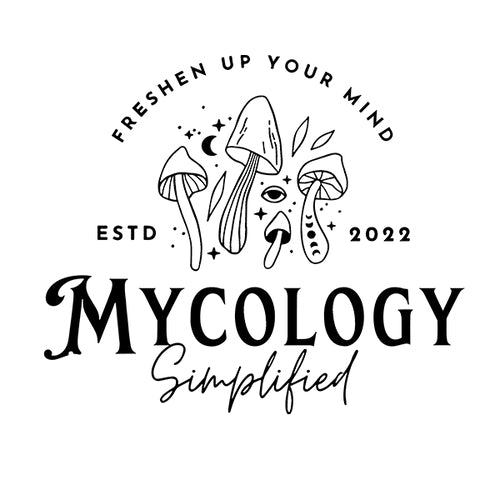
Understanding Agar Cultivation in Mycology | Home Mycology Guide
Compartir
Dive into the world of fungi with a focus on agar cultivation, a cornerstone technique in the realm of home mycology. Whether you're a seasoned mycologist or a budding enthusiast, understanding the role of agar can transform your approach to mushroom cultivation.
What is Agar Cultivation in Mycology?
Agar cultivation in mycology is akin to laying the foundation for a house. Just as a solid foundation supports the structure above it, agar provides the perfect environment for fungal cultures to thrive. Agar, a gelatinous substance derived from seaweed, serves as a nutrient-rich base that can support the growth of a wide range of fungal species.
The Versatility of Agar
The versatility of agar lies in its ability to be tailored to the specific needs of different fungi. By adjusting nutrients, moisture, and pH levels, mycologists can create an optimal growth environment for a variety of fungal species. This makes agar an invaluable tool in the mushroom cultivation process, allowing for the isolation and propagation of desired fungal strains with precision.
The Benefits of Using Agar in Mushroom Cultivation
Creating Pure Cultures
One of the foremost advantages of agar cultivation is the ability to create pure cultures. By isolating a single fungal colony on an agar plate, cultivators can ensure their mushroom cultures are robust and free from contaminants. This level of control is particularly beneficial for home mycologists, where environmental conditions may be more challenging to manage.
Contamination Control
Agar cultivation allows for meticulous contamination control. By working in a sterile environment and using sterilized tools, mycologists can significantly reduce the risk of unwanted organisms infiltrating their cultures. This is crucial for maintaining the integrity of fungal strains and ensuring successful mushroom cultivation.

Strain Preservation and Genetic Manipulation
Agar cultivation facilitates strain preservation and genetic manipulation. Mycologists can store pure fungal strains for extended periods, enabling long-term experimentation and breeding programs. This aspect of agar use amplifies the potential for diversity and innovation in home mycology projects.
Step-by-Step Guide to Agar Cultivation at Home
Preparing the Agar Medium
- Mixing Ingredients: Combine agar powder with water and various nutrients. Common recipes include malt extract agar (MEA) or potato dextrose agar (PDA).
- Sterilization: Sterilize the mixture using a pressure cooker or autoclave to eliminate unwanted organisms.
- Pouring Plates: Once cooled, pour the medium into petri dishes in a sterile environment to solidify.
Inoculating the Agar
- Sterile Technique: Use sterile tools and maintain a clean workspace to prevent contamination.
- Transferring Spores: Transfer fungal spores, tissue cultures, LC or mycelium fragments to the surface of the prepared plates.
- Sealing and Storage: Seal the plates and store them under appropriate conditions (temperature and humidity) to promote growth.
Monitoring and Selection
- Observation: Monitor the development of fungal colonies, checking for signs of healthy growth and contamination.
- Selection: Select colonies with desirable traits for further propagation, ensuring the strongest and most productive strains are cultivated.
Troubleshooting Common Issues in Agar Cultivation
Contamination
Problem: Mold or bacteria growth on agar plates.
Solution: Improve sterilization methods and work in a cleaner environment. Ensure all tools and materials are thoroughly sterilized.

Improper Agar Consistency
Problem: Inconsistent agar affecting fungal growth.
Solution: Ensure precise measurements and sterilization times when preparing agar. Follow recipes accurately and maintain consistent procedures.
Slow or Stalled Mycelium Growth
Problem: Mycelium growth is slow or stalled.
Solution: Adjust storage conditions, such as temperature or humidity, to better suit the needs of the fungal species being cultivated.
Inoculation Issues
Problem: Transfers not taking hold or poor inoculation success.
Solution: Review and refine inoculation techniques. Ensure that agar preparation and transfer methods are performed correctly and under sterile conditions.
Embrace Agar Cultivation for Mycology Success
From the intricate steps of preparing agar plates to troubleshooting common issues, this guide underscores the indispensability of agar cultivation in the diverse field of mycology. Embrace this fundamental technique to enhance your home cultivation projects and join the ranks of proficient mycologists. With practice and attention to detail, you can achieve remarkable success in growing fungi and exploring the fascinating world of mycology.

